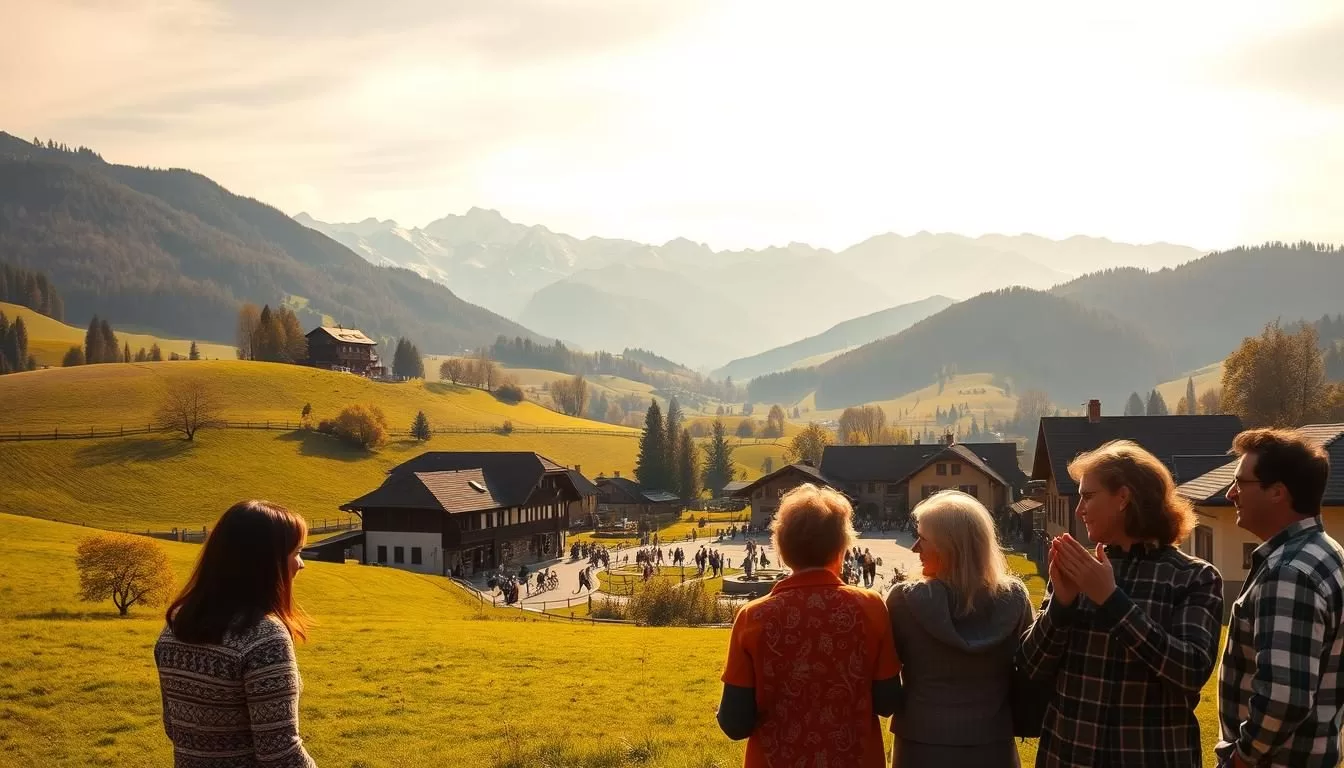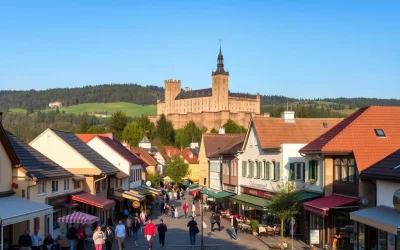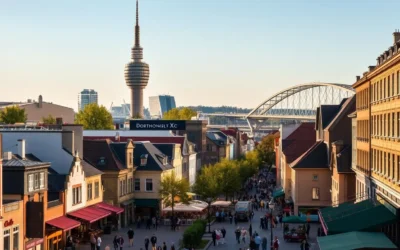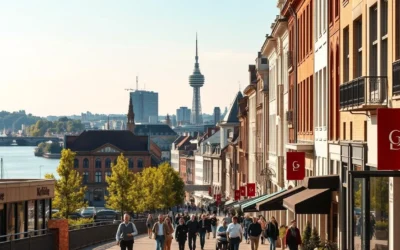✓ Accommodations ✓ Flights ✓ Rental Cars
When you think of Bavaria, you might picture stunning landscapes, rich traditions, and a vibrant culture. But did you know this region is also a treasure trove of linguistic diversity? Here, the German language takes on unique forms, shaped by centuries of history and local identity.
As the largest state in the country, Bavaria is home to over 13 million people. This population speaks a mix of Standard German and various dialects, each with its own charm. From the rolling hills to bustling cities, the way people communicate reflects the area’s deep-rooted heritage.
In this article, you’ll explore how language has evolved over time, the role of education and media, and why these dialects are more than just words—they’re a way of life. Let’s dive into the fascinating world of Bavarian speech!
Overview of Bavaria’s Linguistic Heritage
Exploring the roots of language here reveals a rich tapestry of influences. The way people speak in this region is deeply connected to its history and culture. From early settlements to modern times, the German language has evolved in unique ways, shaped by centuries of tradition.
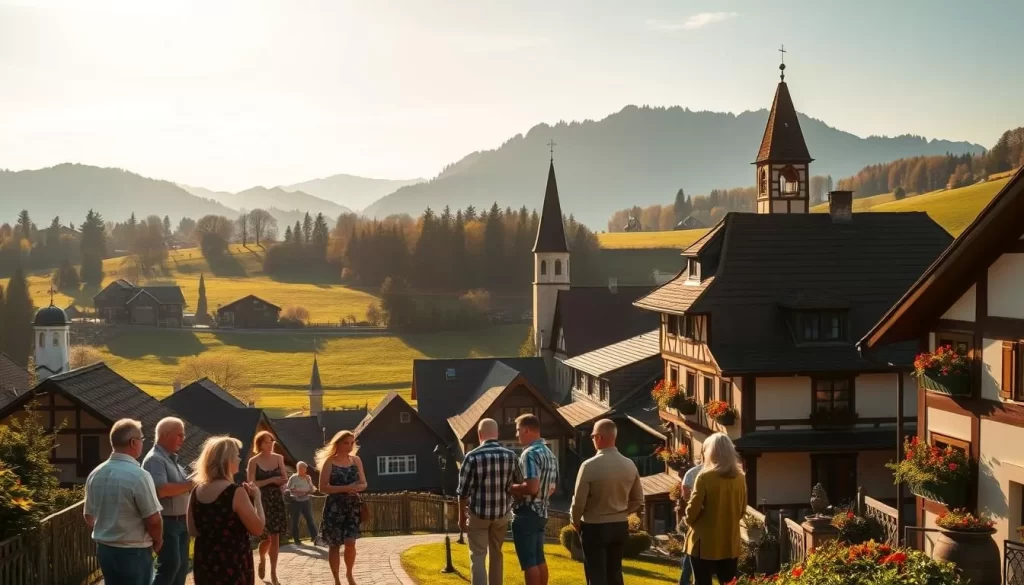
Historical Context of Language in Bavaria
The linguistic journey of this state began in early medieval times. Settlers from Celtic, Roman, and Germanic tribes left their mark on the language spoken today. Over time, these influences blended to create distinct dialects that are still heard in the area.
During the formation of the Duchy of Bavaria, the language became a key part of regional identity. Significant events like the Reformation and political changes after Napoleon further shaped its evolution. Today, these historical practices have transformed into the modern German dialects you hear in cities and towns.
Cultural Influences and Regional Identity
Culture has always played a vital role in shaping the way people communicate here. The population takes pride in its linguistic heritage, which reflects a strong sense of identity. Whether in a bustling city or a quiet village, the difference in speech patterns tells a story of tradition and pride.
From writing to everyday conversations, the Standard German used in media and education coexists with local dialects. This blend of old and new keeps the language alive, making it a unique part of the region’s charm.
Bavaria, Germany: Official and widely spoken languages
Language here is more than just words—it’s a reflection of history and community. The way people communicate in this region showcases a fascinating blend of formal and informal speech. This duality is a key part of the area’s cultural identity.
Comparison of Standard German and Local Dialects
Standard German is the formal language used in education, media, and official communication. It’s the version you’ll find in textbooks and news broadcasts. However, many speakers here also use local dialects in everyday conversations.
The difference between Standard German and Bavarian dialects is striking. Pronunciation, vocabulary, and even grammar can vary significantly. For example, words like “I” (ich in Standard German) might become “i” in a local dialect.

These dialects are not just a way of speaking—they’re a connection to the region’s past. They reflect the unique identity of the population and are a source of pride for many speakers.
Government Policy and Language Education
The government supports bilingual competence, emphasizing Standard German in schools. This ensures that every person can communicate effectively across the country. At the same time, local dialects are encouraged in home and community settings.
This balanced approach preserves the language’s rich heritage while preparing speakers for modern communication. It’s a testament to the state’s commitment to both tradition and progress.
- Standard German is the primary language of education and official communication.
- Local dialects are widely used in everyday conversations, especially in rural areas.
- Government policies promote bilingualism, supporting both formal and informal speech.
This dual system enriches the cultural tapestry of the region, making it a fascinating place to explore linguistic diversity.
Exploring Bavarian Dialects and Variations
Dialects here tell a story of history, culture, and identity. Each region has its own unique way of speaking, shaped by centuries of tradition. From the rolling hills to bustling towns, the language you hear reflects the area’s rich heritage.
Regional Diversity of Bavarian Dialects
The state is home to a variety of dialects, each with its own distinct characteristics. Northern and Southern subgroups differ in pronunciation, vocabulary, and even grammar. For example, a word like “bread” might sound entirely different depending on the area.
Historical migrations and geographical separation have played a key role in shaping these variations. Over time, these influences have created a linguistic tapestry that’s as diverse as the region itself.
Characteristics and Differences from Standard German
While Standard German is used in formal settings, local dialects thrive in everyday conversations. Pronunciation and grammar often differ significantly. For instance, the word “I” (ich in Standard German) might become “i” in a local dialect.
Vocabulary also varies widely. Expressions unique to specific areas add color and depth to the language. These differences are more than just linguistic quirks—they’re a connection to the past and a source of pride for native speakers.
Understanding these dialects offers a glimpse into the region’s cultural identity. It’s a reminder that language is more than just words—it’s a way of life.
Language, Media, and Literature in Bavaria
Media and literature in this area reflect a unique blend of tradition and modernity. Local dialects play a significant role in shaping how people express themselves creatively. From television shows to poetry, the way people communicate here is deeply tied to their cultural roots.
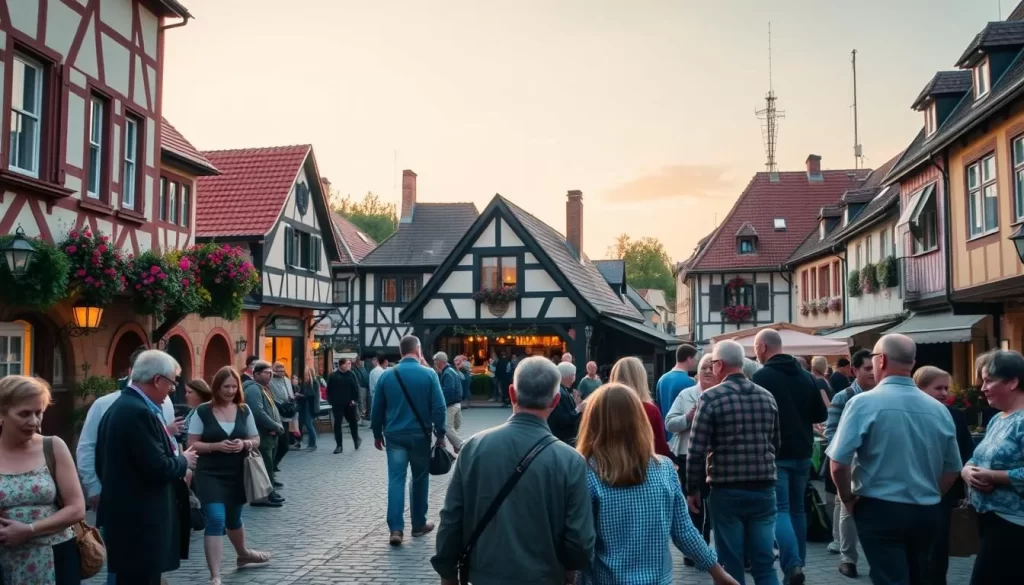
Impact of Dialects in Bavarian Media
Regional media often features dialects prominently. Television programs, radio shows, and even online content use local speech to connect with audiences. For example, FC Bayern Munich incorporates dialects in their campaigns to engage with the community.
This approach reinforces cultural pride and identity. It also highlights the difference between formal and informal communication. While Standard German is used in national broadcasts, local media thrives on the richness of dialects.
Literary Traditions in Bavarian Dialects
Literature here is a testament to the enduring charm of regional speech. Many writers and poets use dialects to capture the essence of local life. Their works often explore themes of heritage, identity, and community.
The interplay between Standard German and dialects in writing is fascinating. While formal literature follows standard rules, informal pieces embrace the quirks of local speech. This blend keeps the language vibrant and relevant.
For those interested in learning more about this linguistic heritage, check out the Bavarian language on Wikipedia.
Educational Influences on Language Usage
Education plays a key role in shaping how people communicate in this area. Schools here focus on teaching Standard German, ensuring students can read and write effectively. At the same time, local dialects are valued and preserved, creating a unique linguistic balance.
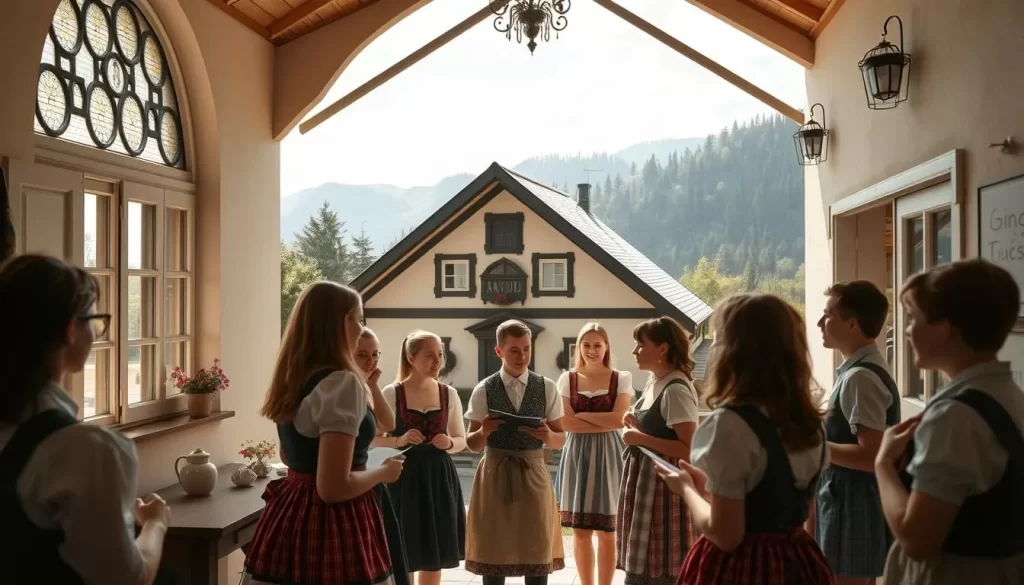
Role of Standard German in Schools
In classrooms, Standard German is the primary medium of instruction. This formal version of the language helps students communicate across the country. Teachers emphasize reading, writing, and grammar to build strong foundational skills.
Despite this focus, schools also introduce students to the rich heritage of regional dialects. This dual approach ensures that every person can navigate both formal and informal settings with ease.
Preservation of Regional Linguistic Identity
Outside the classroom, dialects thrive in homes and communities. Families often use local speech patterns, keeping traditions alive. This practice ensures that the language remains vibrant and relevant.
Government initiatives support this balance. Programs encourage bilingual competence, allowing speakers to switch between Standard German and dialects seamlessly. This approach preserves cultural identity while preparing students for modern communication.
| Aspect | Standard German | Regional Dialects |
|---|---|---|
| Usage | Formal education, media | Everyday conversations, home |
| Focus | Reading, writing, grammar | Cultural heritage, identity |
| Support | Government policies | Community initiatives |
This educational model ensures that the language evolves without losing its roots. It’s a testament to the area’s commitment to both tradition and progress.
Practical Communication in Bavaria Today
Navigating daily communication in this area is both exciting and rewarding. Whether you’re visiting or settling in, understanding the blend of formal and informal speech can enhance your experience. Here’s how you can communicate effectively and embrace the linguistic diversity.
Everyday Use of Dialects and Standard German
In daily life, you’ll encounter a mix of Standard German and local dialects. Formal settings like offices and schools use Standard German, while informal conversations often feature dialects. For example, greetings like “Grüß Gott” or “Servus” are common in casual interactions.
Understanding local dialects can make your interactions more meaningful. Phrases like “O’zapft is!” during Oktoberfest or “Mia san mia” at community events reflect cultural pride. These expressions are more than words—they’re a connection to the area’s heritage.
Tips for Embracing Linguistic Diversity
To navigate this linguistic landscape, start by learning basic phrases in both Standard German and local dialects. Active listening is key—pay attention to pronunciation and context. Watching local media or attending events can also help you immerse yourself in the culture.
Here are some practical strategies:
- Practice greetings like “Grüß Gott” to show respect for local customs.
- Use Standard German in formal settings but be open to dialects in casual conversations.
- Engage with native speakers to build familiarity with regional expressions.
For more insights, explore resources like Bavarian German tips. These tools can help you bridge linguistic differences and connect more deeply with the community.
Remember, communication here is about more than words—it’s about embracing a rich cultural identity. With patience and practice, you’ll find both versions of the language enriching and rewarding.
Conclusion
The linguistic landscape here is a vibrant blend of tradition and modernity. Over centuries, the language has evolved, shaped by historical events and cultural pride. Today, Standard German dominates formal settings, while local dialects thrive in everyday conversations.
Media, literature, and education play crucial roles in preserving this diversity. From television shows to classroom lessons, the coexistence of formal and informal speech reflects the area’s rich heritage. Government policies further support this balance, ensuring both traditions and progress are honored.
Exploring this unique language environment offers a deeper understanding of its cultural significance. Whether you’re a speaker or a learner, embracing both Standard German and dialects enriches your connection to the community. Dive into this linguistic journey and discover the stories behind every word.
The above is subject to change.
Check back often to TRAVEL.COM for the latest travel tips and deals.
